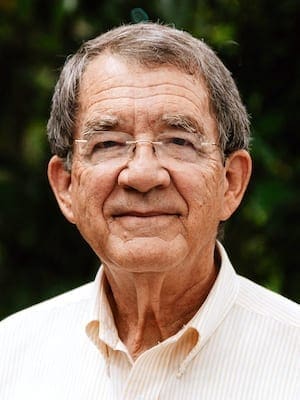Teachers are often accused of thinking that education is the solution to every problem.
While such thinking is reason to believe the truth of the old saying, “Every generalization is false, including this one,” there is good evidence that knowledge and understanding can help with the various problems that can afflict us.
Recent attention to symbols and their power to evoke deep and strong responses has produced fruitful dialogue about realities that lurk beneath the surface of our collective experience.
This dialogue has exposed infections in our common life that are detrimental to our political, moral and spiritual health.
Symbols by their very nature have meaning. I remember Paul Tillich’s distinction between a “sign” and a “symbol” – both of which point beyond themselves to something else.
A sign (to an exit or a restroom) merely gives direction, while a symbol (a flag, a cross or a memorial statue) actually participates in the reality to which it points, evoking an emotional response based on the level of one’s own participation in that reality.
The symbols of recent debate and protest are controversial because they point to and participate in features of our common life that have been oppressive, cruel and unjust.
Their presence can be an in-your-face effort to validate a sense of superiority and a justification of injustice.
When such symbols can be removed, especially from official public space, they should be, with clearly stated reasons for doing so, as has been done in many places.
Memorial statues by their nature can exclude and represent disrespect of portions of a population, even by previous generations.
Relocating such symbols is itself a symbolic act that represents a healthy evolution in a community’s thinking about who it is and who it hopes to become.
Resistance to such broadening of understanding is to be expected as a given symbol is often seen in different ways from different vantage points.
A local expression of this process in my area involves the much visited Stone Mountain Memorial Park, established officially as a Confederate memorial, with numerous displays of Civil War reminders, and street names for prominent Confederate figures.
The most prominent, as many know, is the mammoth carving on the north face of the mountain of three horse-mounted leaders of the Confederacy – a gigantic sculpture with its own interesting history a half-century in the making.
For the last half-century, this image has been the public face for the unique geological wonder that embraces a much longer history reaching back to now-lost native American culture.
Interest in removing or relocating symbols that represent a darker side of our past has also led to suggestions that this carving be removed – a project that would not only be costly but also would further disfigure the face of the mountain.
Practicality will probably prevail in response to this suggestion as economics and logistics would seem prohibitive.
This thought has led me to think of a modest suggestion (remember how teachers look to education for answers).
Where a symbol like the Stone Mountain carving exists, and indeed where the whole park itself represents a memorial to the Confederacy, why not add more symbols to expand the context of that part of our heritage that includes the Confederacy?
With the displays that celebrate the South’s part of the mid-19th century, there could be exhibits that teach about how the South became dependent on a plantation system that existed on the backs of slaves captured and brought unwillingly to this continent.
There could be a comprehensive exhibit on the Ku Klux Klan, whose revival in 1915 took place exactly on the site of the mountain.
Its philosophy, symbols, costumes and terroristic practices (cross burning) could be portrayed along with observations that the park’s Lake Venable is named for the mountain’s previous owner and Grand Dragon of the Klan.
There could be a civil-rights exhibit to commemorate those who fought courageously to dismantle the structures of oppression and restriction that found legitimacy in the earlier symbols.
Where is it not practical to remove or relocate some symbols, why not add more to build a broader framework of understanding so that today’s and tomorrow’s children will see the “bigger picture” of who we are as a people?
When the curators of Israel’s history framed the narrative of arrival in the promised land, the highly symbolic crossing of the Jordan is accompanied by Joshua’s instruction to set up the 12 stones they had taken out of the river: “When your children ask their parents in time to come, ‘What do these stones mean?’ Then you shall let your children know, ‘Israel crossed over the Jordan here on dry ground'” (Joshua 4: 21-22).
The testimony suggests that “Jordan crossings” happen in all generations of the covenant journey. It is probably important to remember to include all the stones and to remember to tell the children what they mean.
Colin Harris is professor emeritus of religious studies at Mercer University and a member of Smoke Rise Baptist Church in Stone Mountain, Georgia.
Professor emeritus of religious studies at Mercer University, a member of Smoke Rise Baptist Church in Stone Mountain, Georgia, and the author of Keys for Everyday Theologians (Nurturing Faith Books, 2022).

